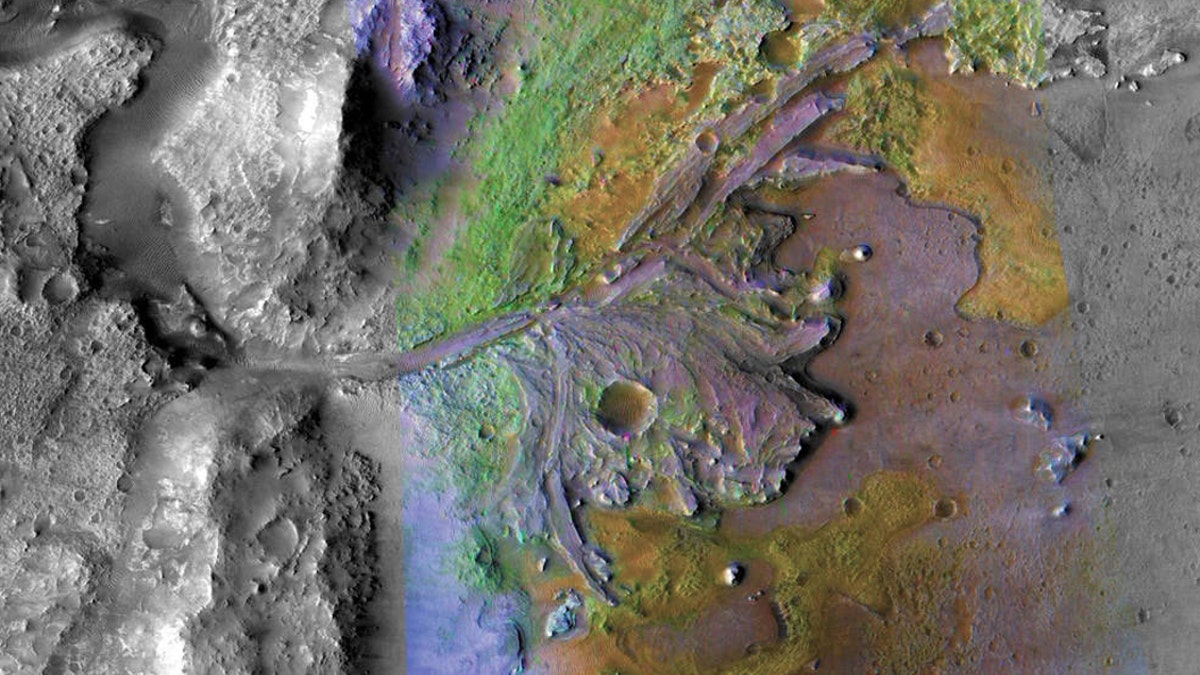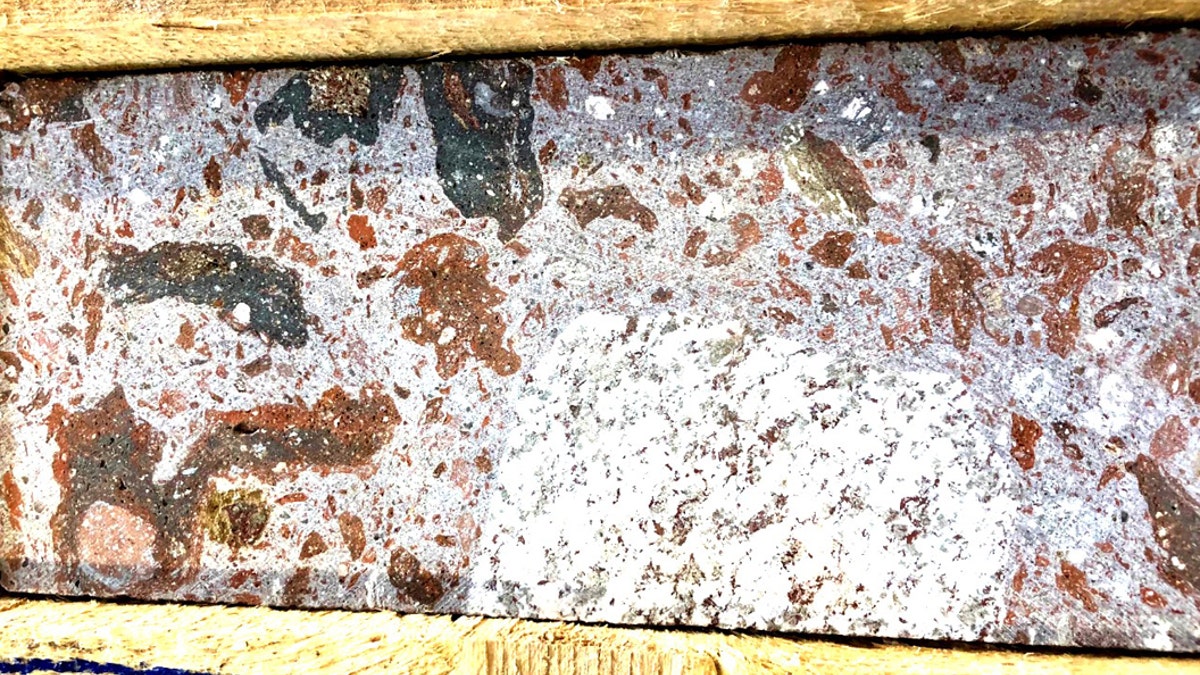Fox News Flash top headlines for Feb. 27
Fox News Flash top headlines are here. Check out what's clicking on Foxnews.com.
The leftover remnants of a meteorite that smashed into Earth 15 million years ago could give new insight into Mars' past, including its oceans and whether it ever supported life.
Known as the Ries Crater, this site in southern Germany has minerals and rocks that resemble parts of the Red Planet's surface. Scientists have studied the rock samples from the crater, which used to be a body of water, and discovered that there is a high pH because of the number of nitrogen isotopes and a high alkaline level.
“The question that drives our interests isn’t whether there’s life on present-day Mars,” said the study's co-author, Tim Lyons, in a statement. “We are driven instead by asking whether there was life on Mars billions of years ago, which seems significantly more likely.”

Jezero Crater, landing site for the upcoming Mars 2020 rover mission. (NASA/JPL/JHUAPL/MSSS/Brown University)
The research was published in the journal Science Advances.
The present-day conditions of the Red Planet are much too cold and dry to support liquid water. However, Mars is believed to have had water on its surface billions of years ago, possibly with minerals and salt that could support life, according to a separate study published earlier this month.
If true, it's likely that the planet's atmosphere would have needed "an immense amount of greenhouse gas, carbon dioxide specifically," Chris Tino, one of the new study's co-authors, added.

A sample of suevite rock formed nearly 15 million years ago by the Ries Crater meteorite impact. Similarly impact-generated rocks exist on the rims of ancient crater lakes on Mars. (Credit: NASA)
NASA's upcoming Mars 2020 rover (to be renamed) will land in a similar spot on the Red Planet, the Jezero Crater. This area is also believed to have contained water billions of years ago and may have a chemical composition similar to what is seen in the Ries Crater.
If that thesis proves correct, the samples that are collected during the Mars 2020 mission could look for nitrogen isotope ratios and determine whether there was carbon dioxide in the atmosphere, the researchers said.
NASA: ANCIENT MARS OASIS COULD HAVE SUPPORTED LIFE
"It could be 10-20 years before samples are brought back to Earth," Lyons explained. "But I am delighted to know that we have perhaps helped to define one of the first questions to ask once these samples are distributed to labs in the U.S. and throughout the world."
The Mars 2020 rover, which is slated to launch July 17, will attempt to detect if there is any fossilized evidence of extraterrestrial beings, in addition to other tasks.
Upon its expected arrival on the Martian surface on Feb. 18, 2021, it will join the still functioning Curiosity rover and the now-deceased Opportunity rover on the Red Planet. Unlike Curiosity or Opportunity before it, this rover will carry the "first helicopter that will fly on another planet," NASA added.
NASA’s long-term goal is to send a manned mission to Mars in the 2030s.





















